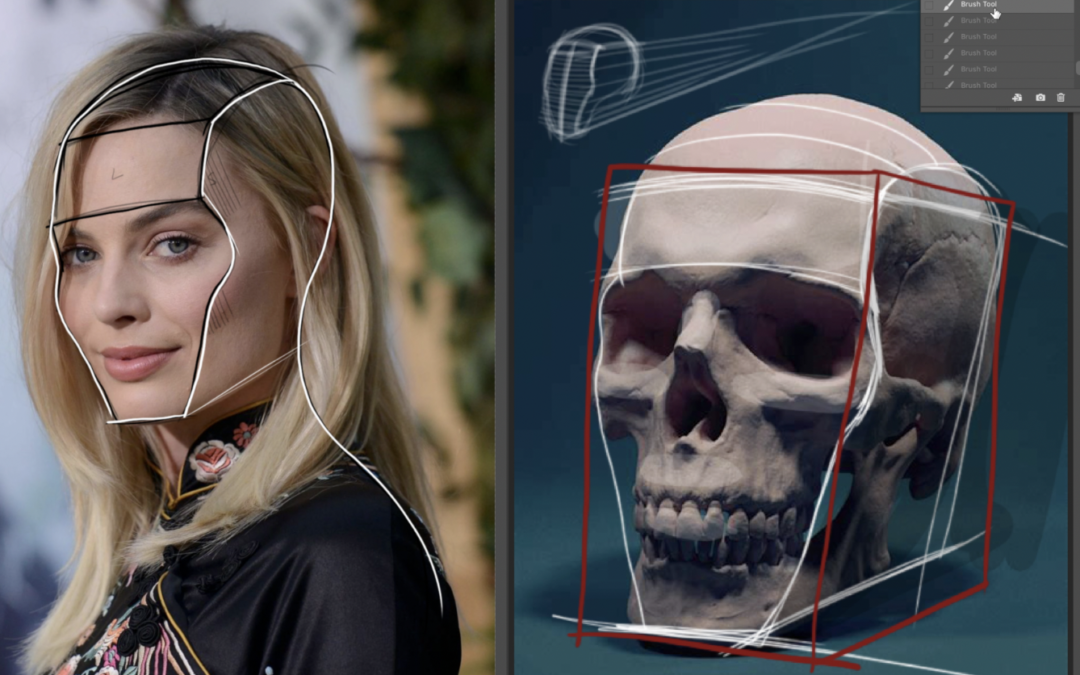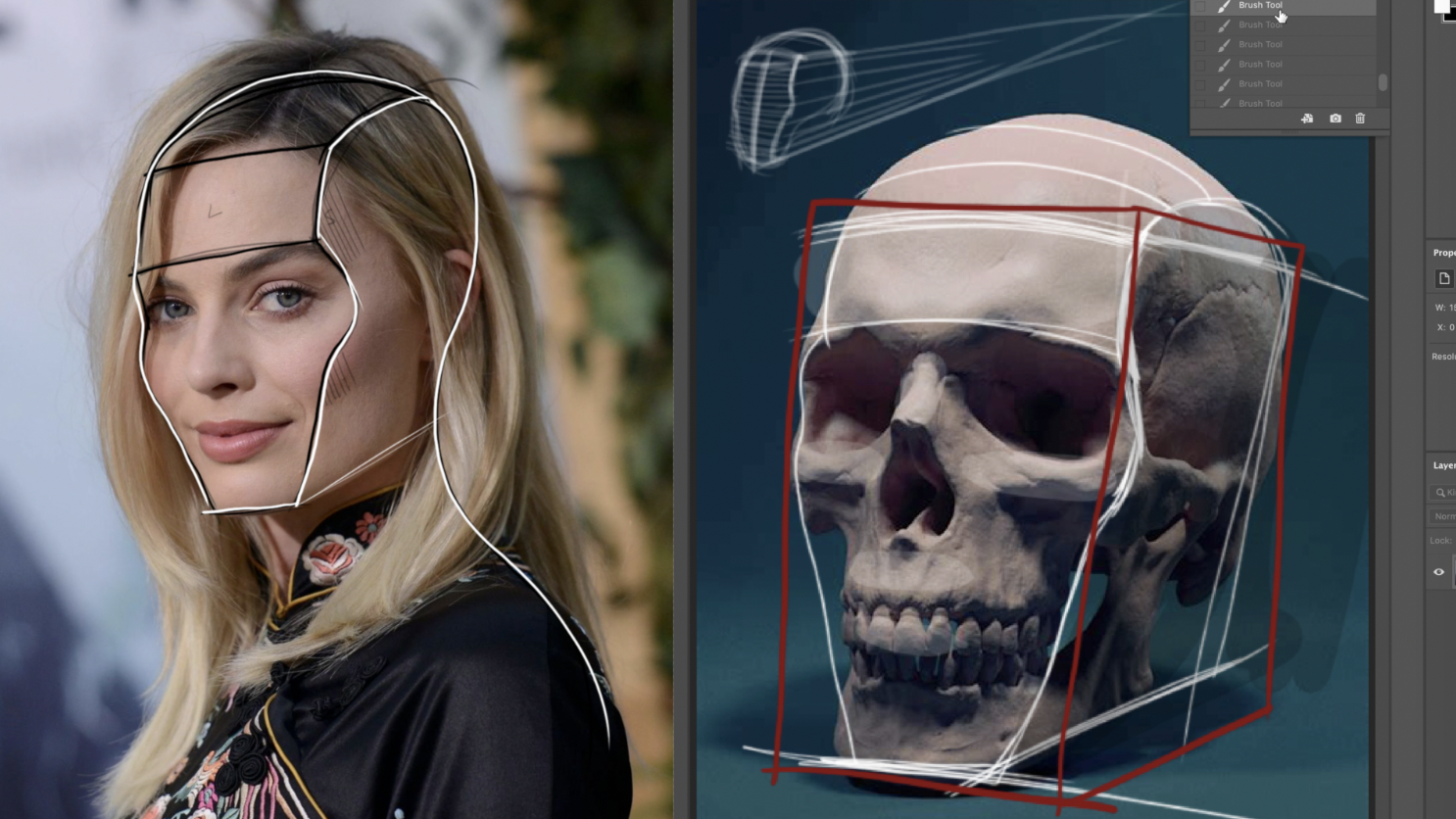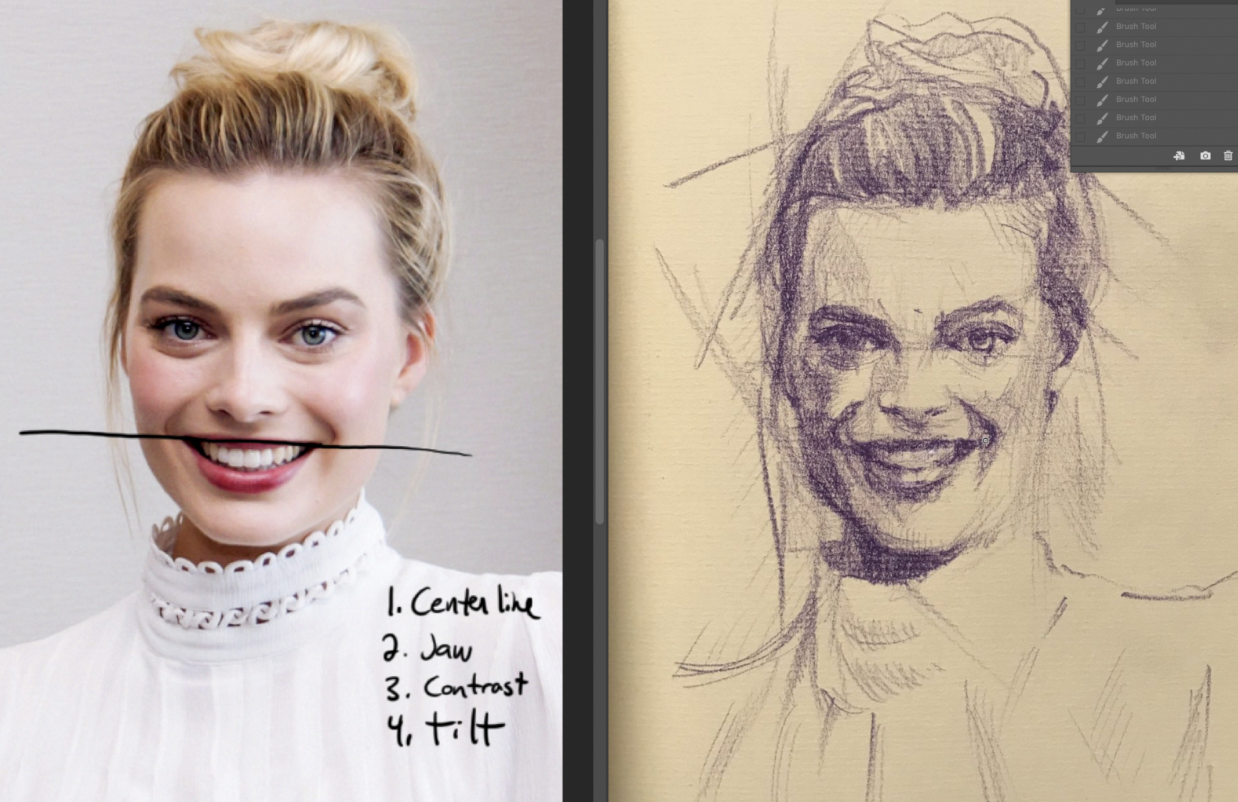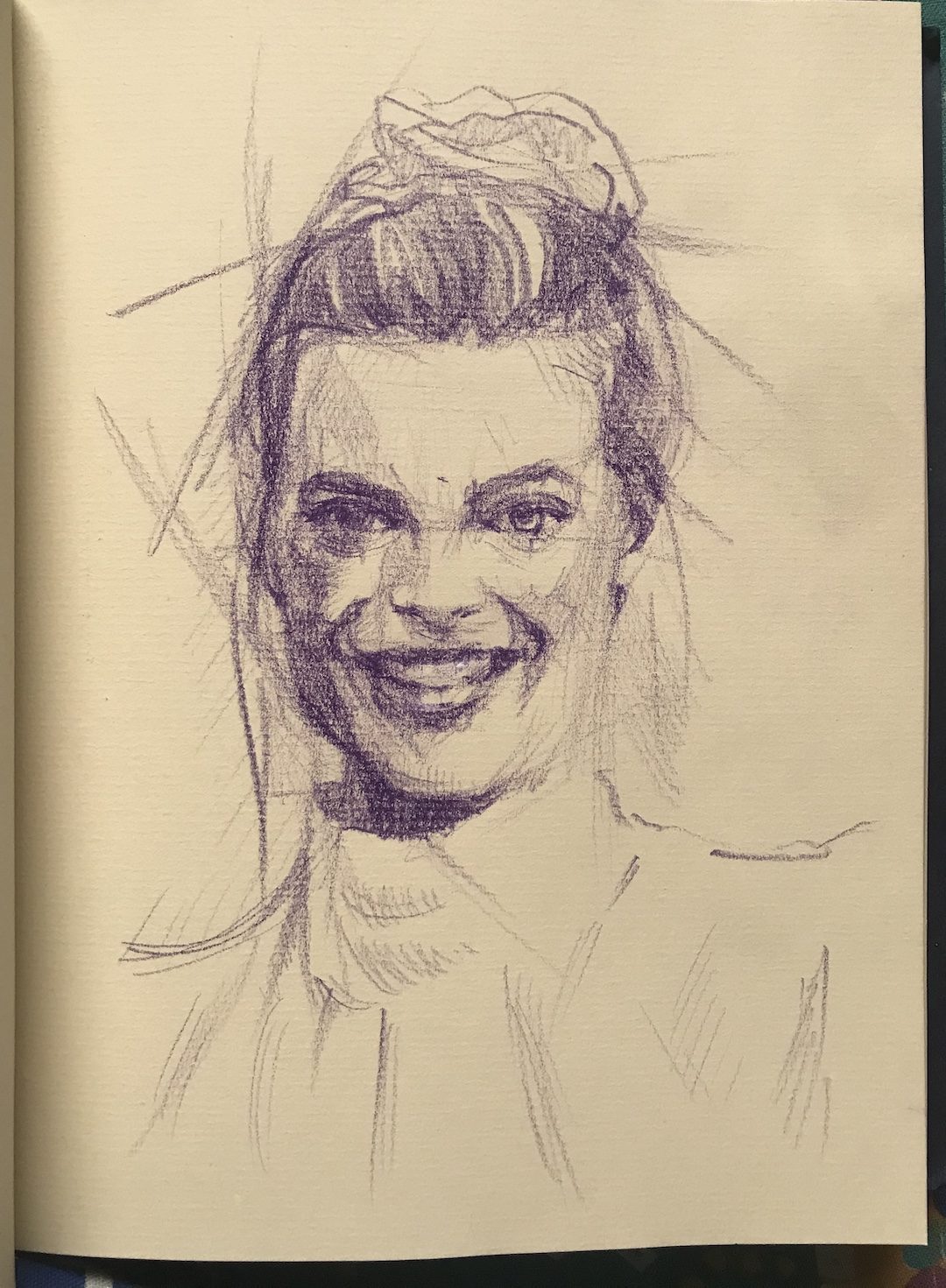
Seeing The Head As A Box
Arjun consistently uploads his work for a critique every week. In this week’s critique, I help out Arjun with seeing how to fit a box to a head. You might ask, why even bother with this technique, what’s the point?
I think what Arjun is practicing is super important. He is trying to understand how to see and decipher the surface planes of the head. Placing a portrait within a box is the most primitive way to see the surface planes. It’s the most macro, front and side.
There is a multitude of surface planes on the head. With portraits, it’s important to know where the big surface plane shifts occur. They occur at the temple and cheekbone, otherwise known as the Zygomaticofacial foramen. I know, anatomical terms, ugh.
Understanding where to see and place the big surface planes will most certainly help you to improve the way you draw a three-dimensional portrait. It’s even better when you light the portrait whereas the front planes catch the light, and the side planes are in shadow.
Lastly, trying to place a perfectly geometric box around an organic head just does not compute for a lot of artists. That is why I suggest drawing curved edged, organic boxes instead of right-angled boxes.
The human body is not synthetic, it’s super curvy. In other words, round all of your corners.
Thank you so much for checking out Arjun’s critique. You can check out his Instagram page @AKTracer.







